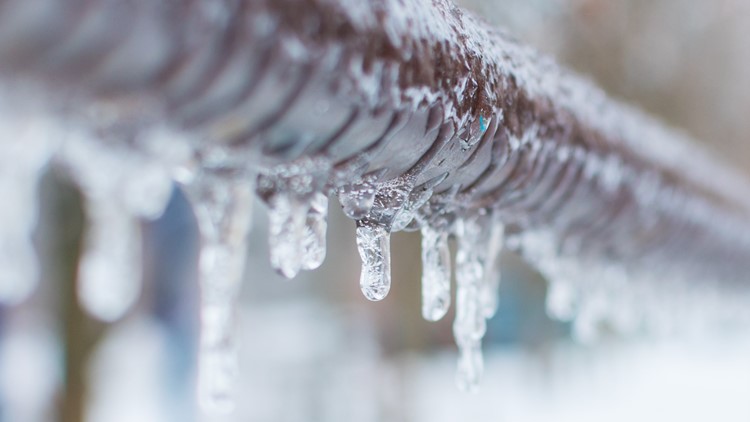Do you find yourself on the lookout for facts and techniques on How to prepare your home plumbing for winter weather?

Winter can ruin your pipes, especially by freezing pipes. Below's exactly how to stop it from happening and what to do if it does.
Introduction
As temperature levels decline, the threat of frozen pipes increases, possibly leading to pricey repair services and water damage. Recognizing just how to prevent icy pipelines is essential for home owners in cool climates.
Avoidance Tips
Protecting prone pipelines
Cover pipes in insulation sleeves or utilize heat tape to protect them from freezing temperatures. Focus on pipes in unheated or exterior locations of the home.
Heating techniques
Maintain interior spaces sufficiently heated up, particularly locations with pipes. Open closet doors to enable cozy air to flow around pipelines under sinks.
Just how to identify icy pipelines
Look for decreased water flow from faucets, uncommon smells or sounds from pipes, and visible frost on revealed pipelines.
Long-Term Solutions
Structural adjustments
Think about rerouting pipelines far from outside walls or unheated locations. Include extra insulation to attic rooms, basements, and crawl spaces.
Updating insulation
Buy high-quality insulation for pipes, attics, and wall surfaces. Correct insulation helps keep consistent temperature levels and minimizes the danger of frozen pipes.
Shielding Outdoor Pipes
Garden hoses and exterior faucets
Detach and drain pipes garden hose pipes prior to wintertime. Mount frost-proof faucets or cover outside faucets with insulated caps.
Comprehending Icy Pipelines
What creates pipelines to ice up?
Pipelines ice up when subjected to temperatures listed below 32 ° F (0 ° C) for expanded durations. As water inside the pipes freezes, it broadens, taxing the pipe wall surfaces and potentially causing them to burst.
Dangers and damages
Frozen pipelines can lead to water system disturbances, residential or commercial property damages, and costly repairs. Burst pipes can flood homes and create considerable structural damages.
Indications of Frozen Piping
Determining frozen pipelines early can avoid them from rupturing.
What to Do If Your Pipes Freeze
Immediate activities to take
If you presume frozen pipelines, keep taps open up to eliminate pressure as the ice thaws. Utilize a hairdryer or towels soaked in hot water to thaw pipelines slowly.
Verdict
Preventing icy pipes requires aggressive measures and fast actions. By recognizing the reasons, indicators, and preventive measures, home owners can protect their plumbing during cold weather.
5 Ways to Prevent Frozen Pipes
Drain Outdoor Faucets and Disconnect Hoses
First, close the shut-off valve that controls the flow of water in the pipe to your outdoor faucet. Then, head outside to disconnect and drain your hose and open the outdoor faucet to allow the water to completely drain out of the line. Turn off the faucet when done. Finally, head back to the shut-off valve and drain the remaining water inside the pipe into a bucket or container. Additionally, if you have a home irrigation system, you should consider hiring an expert to clear the system of water each year.
Insulate Pipes
One of the best and most cost-effective methods for preventing frozen water pipes is to wrap your pipes with insulation. This is especially important for areas in your home that aren’t exposed to heat, such as an attic. We suggest using foam sleeves, which can typically be found at your local hardware store.
Keep Heat Running at 65
Your pipes are located inside your walls, and the temperature there is much colder than the rest of the house. To prevent your pipes from freezing, The Insurance Information Institute suggests that you keep your home heated to at least 65 degrees, even when traveling. You may want to invest in smart devices that can keep an eye on the temperature in your home while you’re away.
Leave Water Dripping
Moving water — even a small trickle — can prevent ice from forming inside your pipes. When freezing temps are imminent, start a drip of water from all faucets that serve exposed pipes. Leaving a few faucets running will also help relieve pressure inside the pipes and help prevent a rupture if the water inside freezes.
Open Cupboard Doors
Warm your kitchen and bathroom pipes by opening cupboards and vanities. You should also leave your interior doors ajar to help warm air circulate evenly throughout your home.

We were made aware of that editorial about How to Prevent Your Pipes From Freezing through a good friend on a different website. Are you aware of someone else who is fascinated with How To Avoid Freezing Pipes? Do not hesitate to share it. Thanks a bunch for your time. Come back soon.
Set Up An Appointment
Comments on “Ways to Defend Your Plumbing from Freezing: Key Strategies”